Play Chess Middlegames that Get the Edge
There are different ways of approaching chess. You may prefer to play three to four move tactical combinations that attempt to gain an advantage of some sort over your opponent.
Or you may prefer a more long term strategy based on gradually assuming positional dominance. The third way is probably the best. Blend the two together. The two armies fight for supremacy in this phase.
Why You Need to Form a Plan

Chess Middlegames: You have to form a plan to succeed in chess
So he or she will be able to calculate and select fairly accurately the best course of action. It is good idea to formulate an plan and stick with it. Even if it is not the best plan, a poor plan is better than no plan at all.
The worst idea is to drift aimlessly through a game. Never having any goal to achieve from one move to the next is the best way to ensure that nothing is achieved. Defeat is then almost inevitable. There are a couple of things we must consider for the chess middlegame.
Weighing Up Material And Position
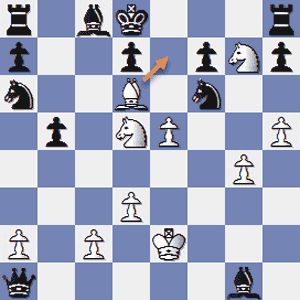
Chess Middlegames: Anderssen - Kieseritzky (London, 1851); Black is up a Queen, 2 Rooks and a Bishop for a pawn, but White to move will win the game with 23.Be7#. Position outweighs material every time.
These do battle for control of the center while the major pieces, Rooks and Queen, wait on the edge of the action. They will join the battle during the middlegame when the position calls for their power and influence.
There are several forms of advantage that chess players struggle for. Let's consider the relationship between material and position. A material advantage, all other things being equal, should mean a favorable position. But remember, never put material gain ahead of positional concerns.
How Pawn Structure Dictates Your Plan
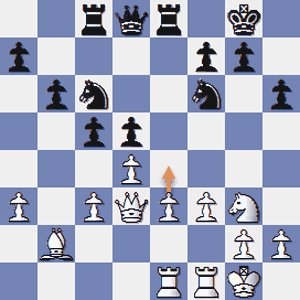
Chess Middlegames: Kotov - Unzicker (Saltsjobaden, 1952); White plays 17.e4 in order to win space. He will finish up with two uncontested central pawns on d4 and e5 that will enable him to launch a successful Kingside attack. Your pawn structure will determine your gameplan.
As you will later see it is advisable not to advance your outer pawns (files a,b,c,d,e,f) without good reason. If they are advanced before the endgame it is preferable that they form a pawn chain so as to receive support from adjacent pawns.
Isolated pawns is the last thing you want. A good pawn structure makes it more difficult for your opponent to break through your defensive shell.
It is especially critical not to move the pawns in front of your castled King if at all possible. This without exception compromises his security.
The Art of Controlling The Center
Chess Middlegames: Botvinnik - Model (Moscow, 1927); Black has gained the upperhand in the center, an edge that will be the key to his victory
If the center can be taken, it gives the aggressor the high ground in the battle. He then has his pieces posted on the best squares. His pieces have command of more squares than his those of his opponent. They also have more mobility and activity. The player who takes the center seizes with it the initiative and the freedom to attack.
He who loses the center finds his pieces driven to poor squares. They have limited mobility and get hemmed in, blocking each other. Unable to mount any pressure on the opposition, it is they who must grimly defend.
Polish Your Positional Strategy
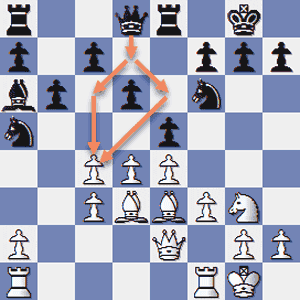
Chess Middlegames: Rubinstein - Colle (Liege, 1930); White and Black engage in a thematic struggle for c4 in the Nimzo-Indian Defense
There is no worth placed on several individual attacks by individual pieces. Solo forays always fail. The strategist will mould his pieces into a single attacking force. Working together and supporting each other, their power increases exponentially.
The strategist seeks out the weakest point in his opponents position and concentrates his force there. Later he will try to create a second weakness to overstretch his opponent's defenses. Everything he does from this point onwards is based on slowly strengthening his own position while gradually weakening that of his opponent.
Prime Your Pieces for Tactical Maneuvers
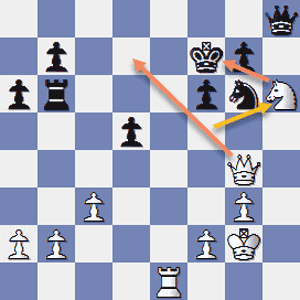
Chess Middlegames: Fishbein - Shulman (San Diego, 2006); 41.Nh6+! opens the road for the White Queen to reach d7. White begins a series of forcing moves, taking advantage of the poor positioning of the Black pieces to first win back the Knight on e7 and then end the contest by picking up the loose Rook on b6 via the fork.
The tactician can use a fork to attack two pieces at once. He can pin his opponents pieces. He can also capture enemy pieces by means of a skewer. Discovered attacks are another useful way of whittling down your opponents forces.
It is also possible to gain positional advantages by sacrificing pieces. Remember material is important but position is infinitely more so. The truth is playing sound, positional chess is the best way to yield tactical opportunities. You should find a way of incorporating both approaches into your playing style.
Knowing When To Exchange
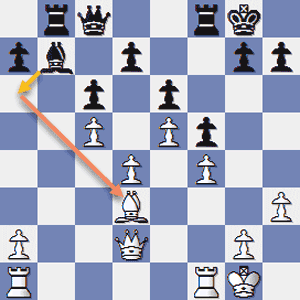
Chess Middlegames: White has a good Bishop on the same color squares as the Black pawns and not his own, Black has a poor Bishop extremely limited by his own pawns. Therefore Black ought to play 1...Ba6, forcing the exchange of White's good Bishop for his poor one.
You should exchange pieces of equal value when you've managed to gain a lead in material. This is done to hasten the endgame. In the case of Queens you should maybe exchange if it can force the King to move, robbing your opponent of the ability to castle.
Or you should exchange Queens if you have good possibilities of promoting a pawn. Other reasons to exchange could be to pull your opponent's pawn structure out of shape.
Moving On
Mastering the art of the exchange is something you will be working on throughout your journey as a chess player. Recognizing when your opponent has a better minor piece than you will one day be instinctive. You'll force the swap without even thinking about it.
There is a long road ahead on your way to mastering the middlegame. It will come with experience in the field, putting the things you have learned into practice. With such practice you can hone the craft of positional chess.






